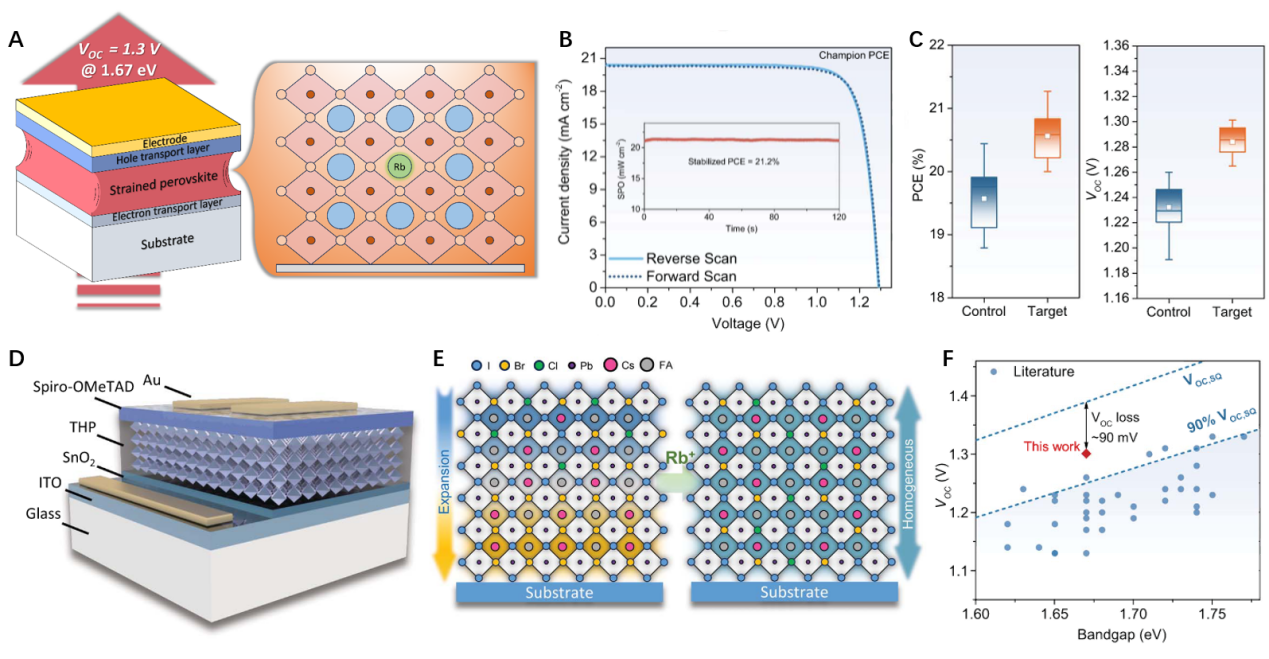Chinese Researchers and International Collaborators Achieve Breakthrough in High-Efficiency Optoelectronic Devices
Supported by the National Natural Science Foundation of China’s Distinguished Research Group Project ( Grant No. 52488201), Professor Yimin Xuan’s group at Nanjing University of Aeronautics and Astronautics, in collaboration with Professor Michael Grätzel’s group at the École Polytechnique Fédérale de Lausanne (EPFL), has achieved an important breakthrough in high-efficiency optoelectronic devices. Their research, entitled “Strain-induced rubidium incorporation into wide-bandgap perovskites reduces photovoltage loss”, was published in Science on April 3, 2025. Read the paper in Science: https://www.science.org/doi/10.1126/science.adt3417.
Wide-bandgap perovskite materials play a pivotal role in achieving high-efficiency tandem solar cells. However, incorporating small-radius rubidium ions (Rb+) has long been a scientific challenge, as it tends to induce non-perovskite phase formation. The research team achieved a breakthrough by developing a strain-assistance strategy, proposing a “strain-induced Rb+ incorporation” mechanism that enables stable embedding of small Rb+ ions into the α-phase of wide-bandgap triple halide perovskites, mitigating tolerance-factor–related phase instability through strain engineering. This approach ensures concurrent structural and compositional stability, leading to markedly improved film crystallinity and a homogeneous energy landscape.
The resulting 1.67 eV wide-bandgap perovskite exhibits a photoluminescence quantum efficiency exceeding 14% under standard one-sun illumination, with a quasi-Fermi level splitting of 1.34 eV and an open-circuit voltage of 1.30 V, corresponding to 93.5% of the radiative limit. This sets a new record for the lowest photovoltage loss among wide-bandgap perovskites. The study reveals a strain-assisted mechanism that stabilizes cation incorporation, providing new insights into the interplay between composition and lattice structure. This discovery lays a solid foundation for the development of efficient and stable tandem solar cells, carrying substantial academic significance and promising application potential.

Figure 1. (A) Strain-induced rubidium incorporation strategy for high-efficiency solar energy conversion. (B) J–V curve and stabilized power output of the device under AM 1.5G illumination. (C) Box plots of power conversion efficiency and open-circuit voltage for the control and target devices. (D) Schematic illustration of the device architecture. (E) Schematic diagram showing the distribution trends of A-site and X-site ions in perovskite films before and after Rb incorporation and their influence on lattice constants. (F) Summary of open-circuit voltages of representative perovskite solar cells with different bandgaps, highlighting the high VOC achieved in this work.
Contact Us

National Natural Science Foundation of China
Add: 83 Shuangqing Rd., Haidian District, Beijing, China
Postcode: 100085
Tel: 86-10-62327001
Fax: 86-10-62327004
E-mail: bic@nsfc.gov.cn
